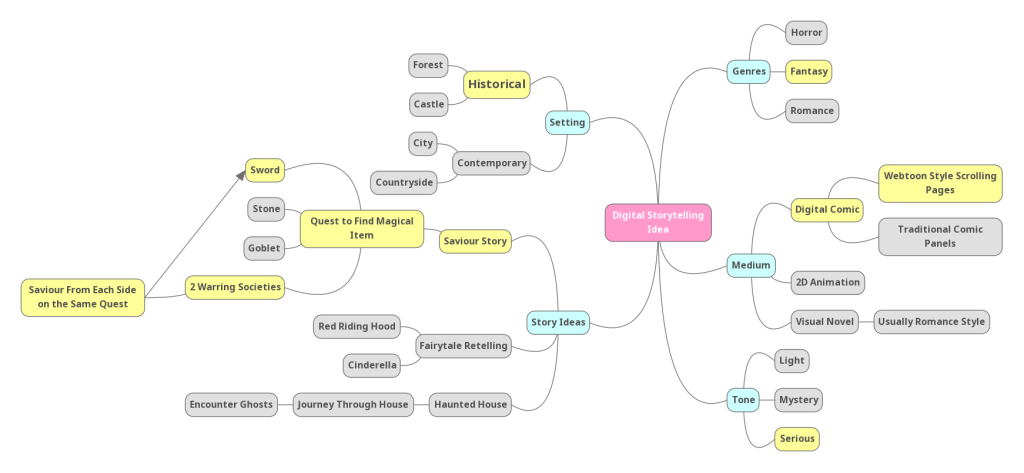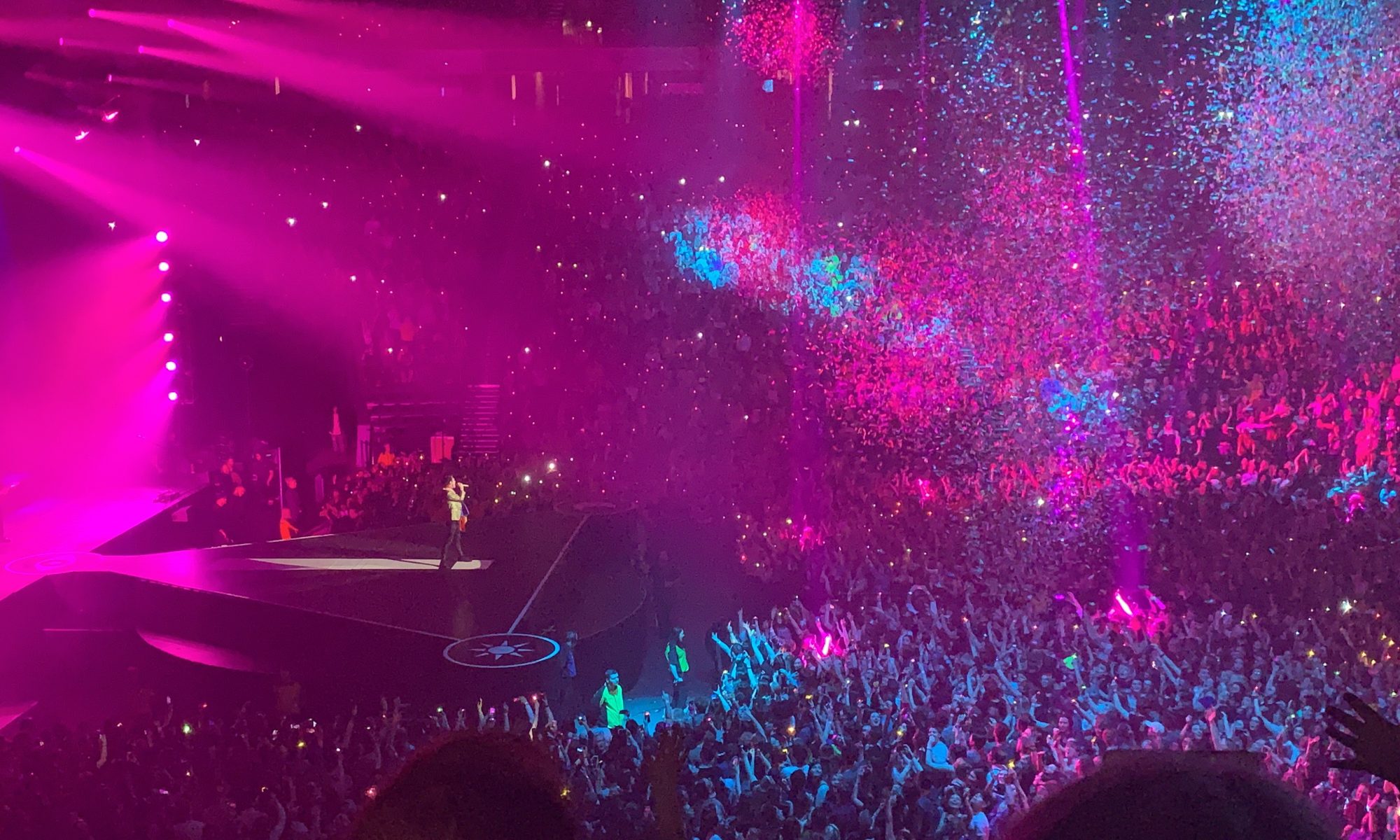Idea Generation
To start this project I first decided to create a mindmap with a bunch of key elements of stories and ideas that I had for what to create for the assignment. This mindmap can be seen below. I wanted to do this first to explore a range of settings, genres, tones and general story ideas that I had come up with whilst thinking about this assignment. Looking through all of these elements allowed me to see what my options were and combine the elements that I enjoyed best to create a story outline that I would most enjoy. Within this mindmap I highlighted the elements I liked most in yellow and started to create my story from these points. This was a really useful exercise as it allowed me to just throw any ideas for each part of the idea (medium/format, setting, genre etc..) into a document without worrying about if these elements worked together or tied together well as this could be selected later on.

Mood Board
Once I had my main elements of the story chosen, I set out to create a mood board. I chose Pinterest to be the medium to create this with. The board I created added elements from each of the points I highlighted on the mindmap and allowed me to visualise the atmosphere and style I wanted to go for for the assignment itself. I decided to look for a lot of inspiration images for a fantasy and medieval setting to really help me visualise how the story would take place and be executed. I also looked at general images that could be inspiration for my 2 main characters and found that I was drawn to the styles and aesthetics I was finding to use in my work. I think this helped me with starting to come up with the designs of the characters within my mind and think more about who they are as people and what they look like within a world such as the content in my mood board.
What Is A Webcomic
As I chose webcomic as my format in which to tell my story I felt that it was important to do a small bit of research into what a webcomic really is and how it differs from traditional print media.
A webcomic is an alternative way to create and publish a comic. It is done in a digital format and usually published on a website or app for other people to consume. As it is not print media there are far fewer restrictions in what the comic has to be, allowing for people to be more creative and experimental with their art styles and subject matter. There is in my opinion a relatively low barrier of entry to webcomics compared to traditional comics as anyone could start to draw and upload any webcomics they make and inevitably find a niche audience who enjoys their work. As these comics are not handled by a publisher there is a lot more freedom to write and draw whatever the artist wants without restriction allowing it to be preferable and somewhat superior to traditional routes. These webcomics can take the form of all kinds of format, being a normal comic strip format, more traditional pages or the long form scrolling images seen in many popular webcomics.
YALSA, 2019. What the Dang Heck Is a Webcomic?? [online] Available at: http://www.yalsa.ala.org/thehub/2019/11/25/what-the-dang-heck-is-a-webcomic-2/ [Accessed 07/03/22]
Grifka. M. (The Chicago School of Media Theory) , 2022. webcomic. [online] Available at: https://lucian.uchicago.edu/blogs/mediatheory/keywords/webcomic/ [Accessed 07/03/22]
Fantasy Genre Research
Fantasy is a genre within the speculative fiction umbrella term. Speculative fiction encompasses stories with elements from fantasy, horror and science fiction, essentially meaning anything that isn’t real world (though there is some overlap). Fantasy as a genre usually has the stories set in lower evolved societies, such as placing the story in a historical or medieval setting, and usually features a magical element to it. Often times fantasy can take inspiration from fairytales, mythology and folklore for its world rules and magical parts and usually involves characters from fictional races as a consistent part of the world. These include things such as trolls, elves, dwarves, dragons and other magical creatures. Fantasy is inherently not a realistic genre so authors are free to play with any elements and world building that they want to create a unique and magical world with rules of their own creation.
The genre of fantasy, and overlapping sub genres within speculative fiction, are something that I have always been interested in and are a genre I consume the most content from overall. I personally really like the escapism that fantasy offers, allowing the reader to be transported to an entirely different world. A lot of big fantasy tropes such as a medieval setting, a magic system and mythical creatures are staples of the genre and can be seen as the defining characteristics. I really wanted to place my story in the fantasy genre as it would allow me to get creative with story elements and have a lot of fun with my illustrations and environments for my webcomic. As I have said above in my planning, I am interested in putting my story within a medieval type society as I think it will add a fantastical vibe to the story inherently and the addition of elves and a magical sword will really tie it into the fantasy genre and make it truly recognisable.
Masterclass, 2021. What Is the Fantasy Genre? History of Fantasy and Subgenres and Types of Fantasy in Literature. [online] Available at: https://www.masterclass.com/articles/what-is-the-fantasy-genre-history-of-fantasy-and-subgenres-and-types-of-fantasy-in-literature#how-did-fantasy-originate-as-a-genre [Accessed 10/03/22]
Carmody. A, 2022. What is the Fantasy Genre? – Definition & Examples. [online] Available at: https://fantasybookfanatic.com/what-is-the-fantasy-genre-definition-examples/ [Accessed 10/03/22]
